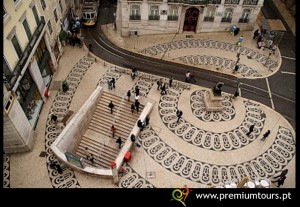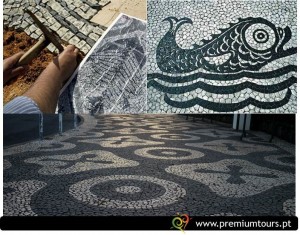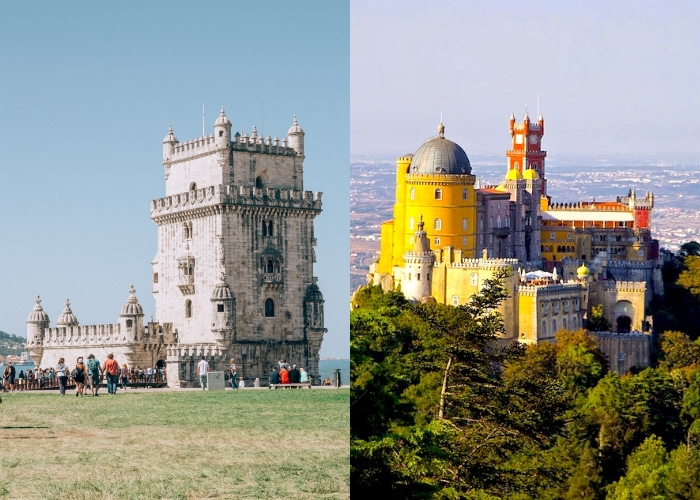If you had already the opportunity to visit the streets of Portugal you certainly came across pedestrian streets, squares, parks and courtyards paved in white and black. This type of pavement, typical of Portugal, is called the Portuguese Cobblestone!

The Portuguese Cobblestone is one of the oldest Portuguese traditions. This art emerged in Portugal in the 14th Century by D. Manuel I that marked the beginning of the paving of the Lisbon’s streets, and quickly as spread throughout the Country and colonies, allying the artistic sense with a concept of functionality.
This traditional art is a result of the paving with irregularly shaped stones of limestone and basalt, which are used to form decorative contrast created by the white and black stones.
In the Portuguese Cobblestone you can find many decorative elements traditionally from Portugal, associated with socioeconomic activities and especially with the time of the Portuguese Discoveries. In Portugal it’s often to find pavements illustrated with fish, fruit, ocean waves, stars and many other elements.
Those who are dedicated to this form of expression traditional from Portugal are called ‘mestres calceteiros’ and make this a true masterpiece, full of stories to tell!
To find more about Portugal go to our website and get to know the tours that we have to offer!





